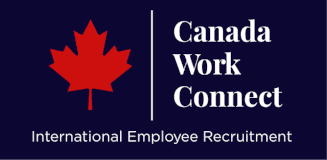Tech workers have a number of options for immigrating to Canada.
First, let’s talk about getting to Canada. Foreign nationals need a work permit in order to legally work in Canada. Some of these work permits are specifically tailored to tech workers. Although, it is possible for tech workers to skip straight to applying for permanent residency without ever setting foot in Canada. That being said, studies have shown that immigrants with Canadian work experience tend to have better labour market outcomes. They tend to make more money and are more likely to be employed in the first year after landing.
Without further ado, here are some Canadian work permit options for tech workers.
Global Talent Stream
A major temporary path is the Global Talent Stream. This route is designed to process 80 percent of applications in two weeks or less. Employers use it to bring in high-skilled staff quickly. An employer who qualifies can be either Category A or B.
Category A is for companies that are growing very quickly and need specialized talent from abroad. A Category A employer must get approval from a referral partner. This is usually a local, governmental or semi-governmental agency that has as its mission a city or area’s economic development.
Category B is for employers who are looking for certain skilled workers that Canada has listed as being needed but in short supply. The list is known as the Global Talent Occupations List. Canada’s most recent list contains twelve occupations. Each of them is in the technology field.
Employers must meet certain other requirements. For example, they must show that hiring the foreigner will create permanent benefits for Canada. Proving the new hire will create jobs for Canadians or transmit skills or knowledge to Canadians are ways to do this. The employer must also show they are paying the foreigner a certain minimum wage. This can vary between occupations and provinces.
CUSMA
This is the Canada-United States-Mexico Agreement, which replaced NAFTA. It has provisions that facilitate talent mobility between the three countries. The two categories relevant to tech workers are Professionals and Intra-Company Transfers (ICT).
CUSMA identifies 63 occupations that qualify under the Professionals category. Computer systems analysts are among these occupations.
ICTs are employees that are moving locations within the company to a branch in Canada. There is no list of which occupations qualify or are excluded. Generally, an intra-company transferee is a person who has worked for the company for at least one year and has either management roles or special knowledge.
Intra-Company Transfer (non CUSMA)
It is possible to make an ICT from a country other than Mexico or the United States. For example, the free trade agreement between the European Union and Canada (CETA) has provisions for ICTs, as does the agreement with the U.K.
A worker coming to Canada through any ICT does not need a Labour Market Impact Assessment. The LMIA, as it is often abbreviated, is a process that shows that hiring a temporary worker will not replace any Canadian workers.
Pathways to permanent residency
Those who want to stay in Canada more long term can apply for permanent residency. Permanent residents oftentimes get more mobility within Canada than temporary residents. They no longer need a work permit, though they may have to renew their PR card at some point. Also, the possibility of becoming a citizen opens up after a few years of living in Canada as a permanent resident.





